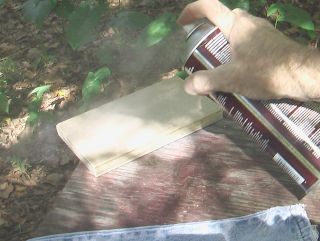
|
I found the leg from a pair of cut-off blue jeans,
isolated a section with no holes or badly worn spots, and cut it open so
it can be laid flat.
Found a strip of 3/4 inch hardwood plywood left over from another project.
It is 5 inches wide. I woulda liked it to be a bit wider, but that's
how wide it was. I cut a piece about 8 inches long.
A minute on the belt sander got the splinters off and trued up the edges
a bit, so now I can spray it with 3M Super 77 spray adhesive.
|
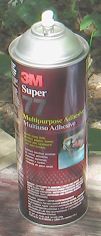
|
|
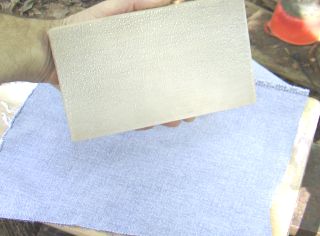
|
I let the glue dry for about 30 seconds, and laid
the cloth on a flat surface, nice and even.
We don't want any lumps,
do we?
|
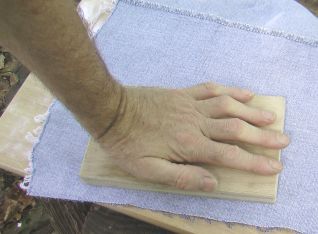
|
The glued board is positioned over the cloth and
pressed down firmly. Held for a minute or so, to give the glue a chance
to set a little. Probably unnecessary, as the glue is really tacky
after 30 seconds drying time. It makes a pretty good contact cement.
I have used this glue to make inhibitor tubes from posterboard, and so far it has worked very well.
|
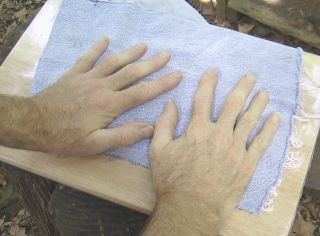
|
Turned topside-up, I smooth the cloth down to make sure it is stuck everywhere.
Seems pretty tight.
|
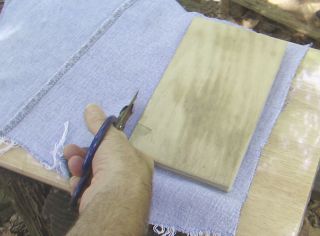
|
After a few minutes' drying time, I turn it back
over and trim the cloth so there is about 1/2 inch around each side. This
will be folded down to cover the edges.
|
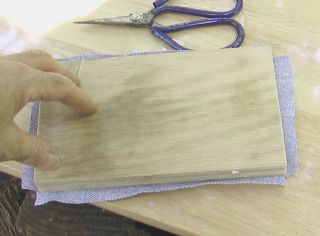
|
A notch is cut at each corner so that the flaps will fold evenly, with no overlap.
|
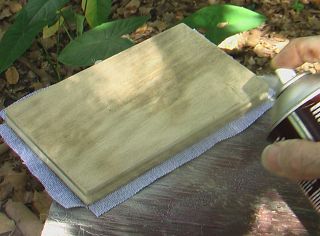
|
A little more glue is sprayed on the flaps. I
am trying hard to keep it off the upper surface of the board, and failing.
Guess I could have used masking tape....
|
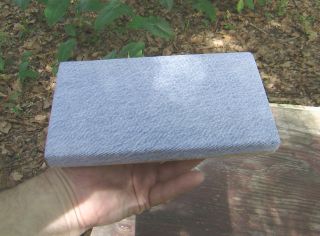
|
After a half-minute or so, the flaps are pressed against the edges to make a very tidy-looking clothboard.
Isn't it pretty! I am thinking there must be other uses for cloth boards like this.
Any ideas? Please share!
|








